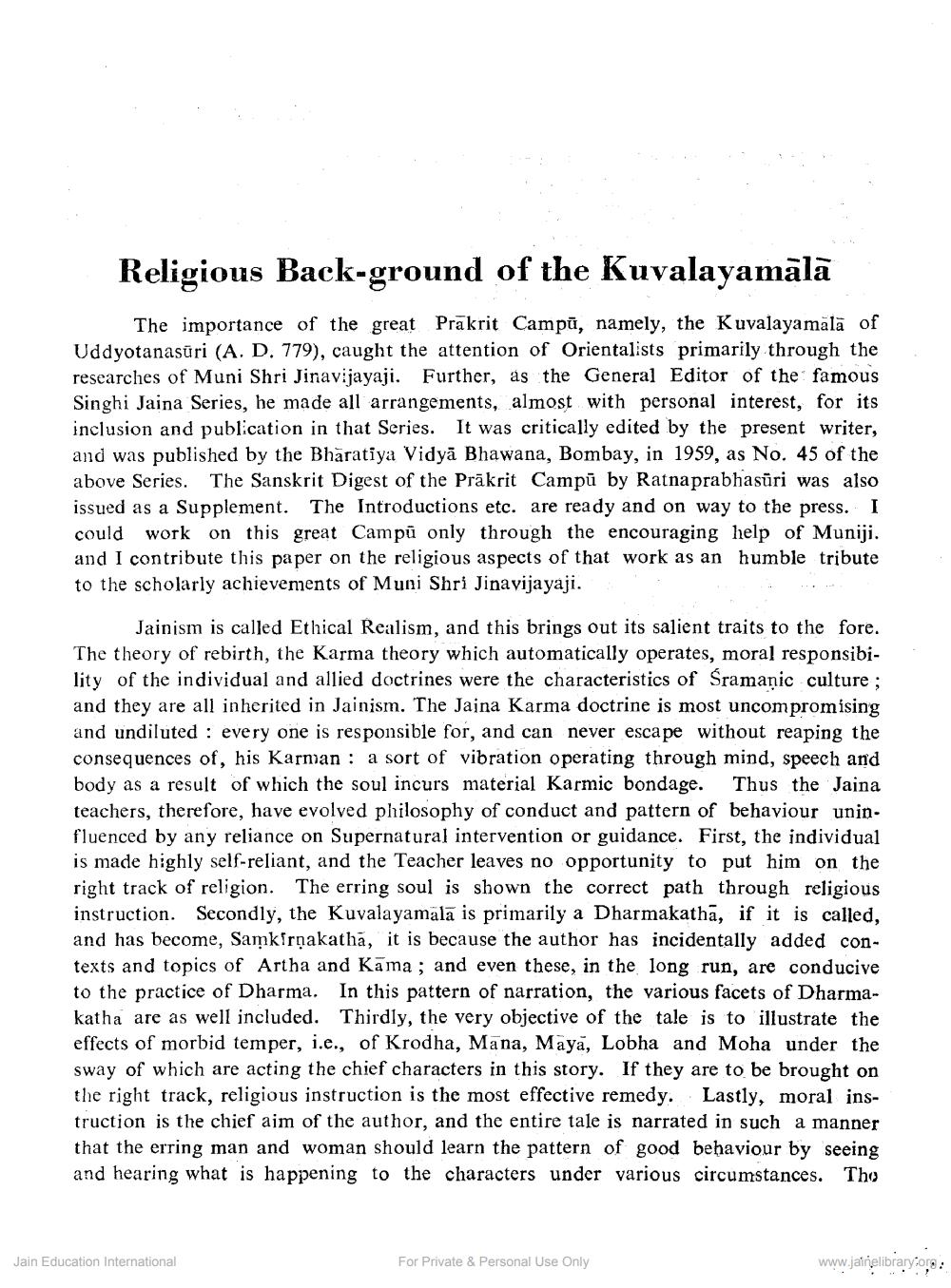Book Title: Religious background of Kuvalayamala Author(s): A N Upadhye Publisher: Z_Jinvijay_Muni_Abhinandan_Granth_012033.pdf View full book textPage 1
________________ Religious Back-ground of the Kuvalayamālā The importance of the great Prakrit Campū, namely, the Kuvalayamála of Uddyotanasūri (A, D. 779), caught the attention of Orientalists primarily through the researches of Muni Shri Jinavijayaji. Further, as the General Editor of the famous Singhi Jaina Series, he made all arrangements, almost with personal interest, for its inclusion and publication in that Series. It was critically edited by the present writer, and was published by the Bharatiya Vidyā Bhawana, Bombay, in 1959, as No. 45 of the above Series. The Sanskrit Digest of the Prākrit Campū by Ratnaprabhasūri was also issued as a Supplement. The Introductions etc. are ready and on way to the press. I could work on this great Campū only through the encouraging help of Muniji. and I contribute this paper on the religious aspects of that work as an humble tribute to the scholarly achievements of Muni Shri Jinavijayaji. Jainism is called Ethical Realism, and this brings out its salient traits to the fore. The theory of rebirth, the Karma theory which automatically operates, moral responsibility of the individual and allied doctrines were the characteristics of Sramanic culture; and they are all inherited in Jainism. The Jaina Karma doctrine is most uncompromising and undiluted : every one is responsible for, and can never escape without reaping the consequences of, his Karman: a sort of vibration operating through mind, speech and body as a result of which the soul incurs material Karmic bondage. Thus the Jaina teachers, therefore, have evolved philosophy of conduct and pattern of behaviour unin. fluenced by any reliance on Supernatural intervention or guidance. First, the individual is made highly self-reliant, and the Teacher leaves no opportunity to put him on the right track of religion. The erring soul is shown the correct path through religious instruction. Secondly, the Kuvalayamala is primarily a Dharmakathā, if it is called, and has become, Samkírņakatha, it is because the author has incidentally added contexts and topics of Artha and Kāma; and even these, in the long run, are conducive to the practice of Dharma. In this pattern of narration, the various facets of Dharmakatha are as well included. Thirdly, the very objective of the tale is to illustrate the effects of morbid temper, i.e., of Krodha, Mana, Maya, Lobha and Moha under the sway of which are acting the chief characters in this story. If they are to be brought on the right track, religious instruction is the most effective remedy. Lastly, moral instruction is the chief aim of the author, and the entire tale is narrated in such a manner that the erring man and woman should learn the pattern of good behaviour by seeing and hearing what is happening to the characters under various circumstances. Tho Jain Education International For Private & Personal Use Only www.jainelibrary:opePage Navigation
1 2 3 4 5 6
